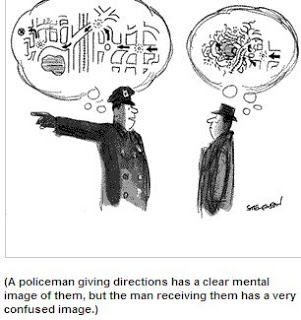Before we can get into any serious discussion about the nature of communication, we have to deal with the ubiquitous barriers that are part and parcel of everything we intend to communicate.
Gaps, blocks, and errors are potentially viable and are, in fact, probable in every act of communication. The intention of any piece of communication is for the sender to get the desired result when the receiver has interpreted what is being sent through the channels.
If, for any reason, what the receiver understands differs from what was intended to be sent the “information” has not, in fact, been “transferred.” Therefore, the very act of communication is rendered useless and the intended communication never happened.
When communication fails or gets twisted, there is a “barrier” or obstacle somewhere in the process of the transfer of information from sender to receiver.
I'll deal with noise in the context of communication in more detail in the next few posts. For now, you should keep in mind that communication noise may be physical, psychological, physiological, semantic, socio-cultural or organisational. Also, please remember that in the communication context, 'noise' is not equated with 'unwanted sound.'




No comments:
Post a Comment